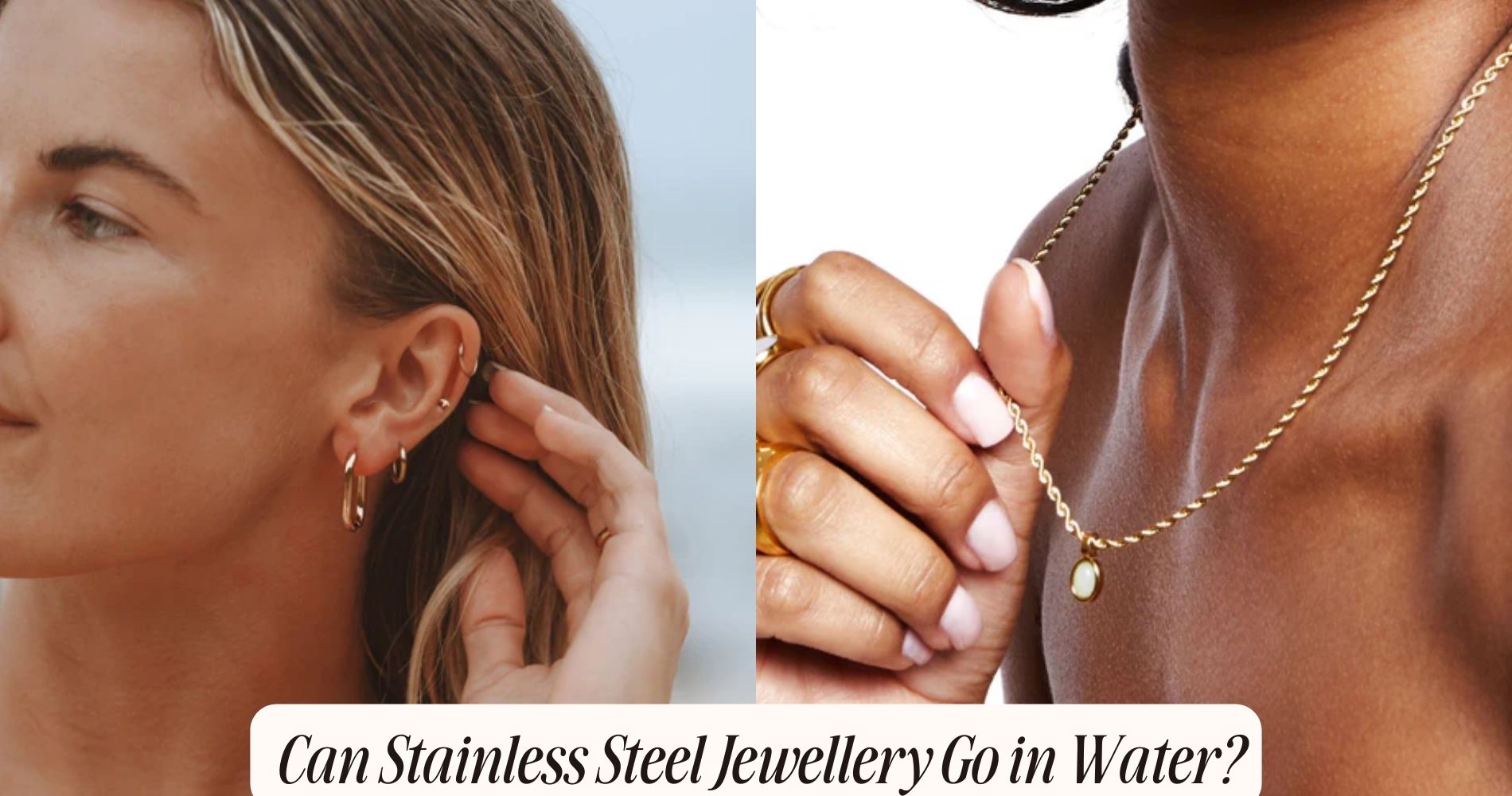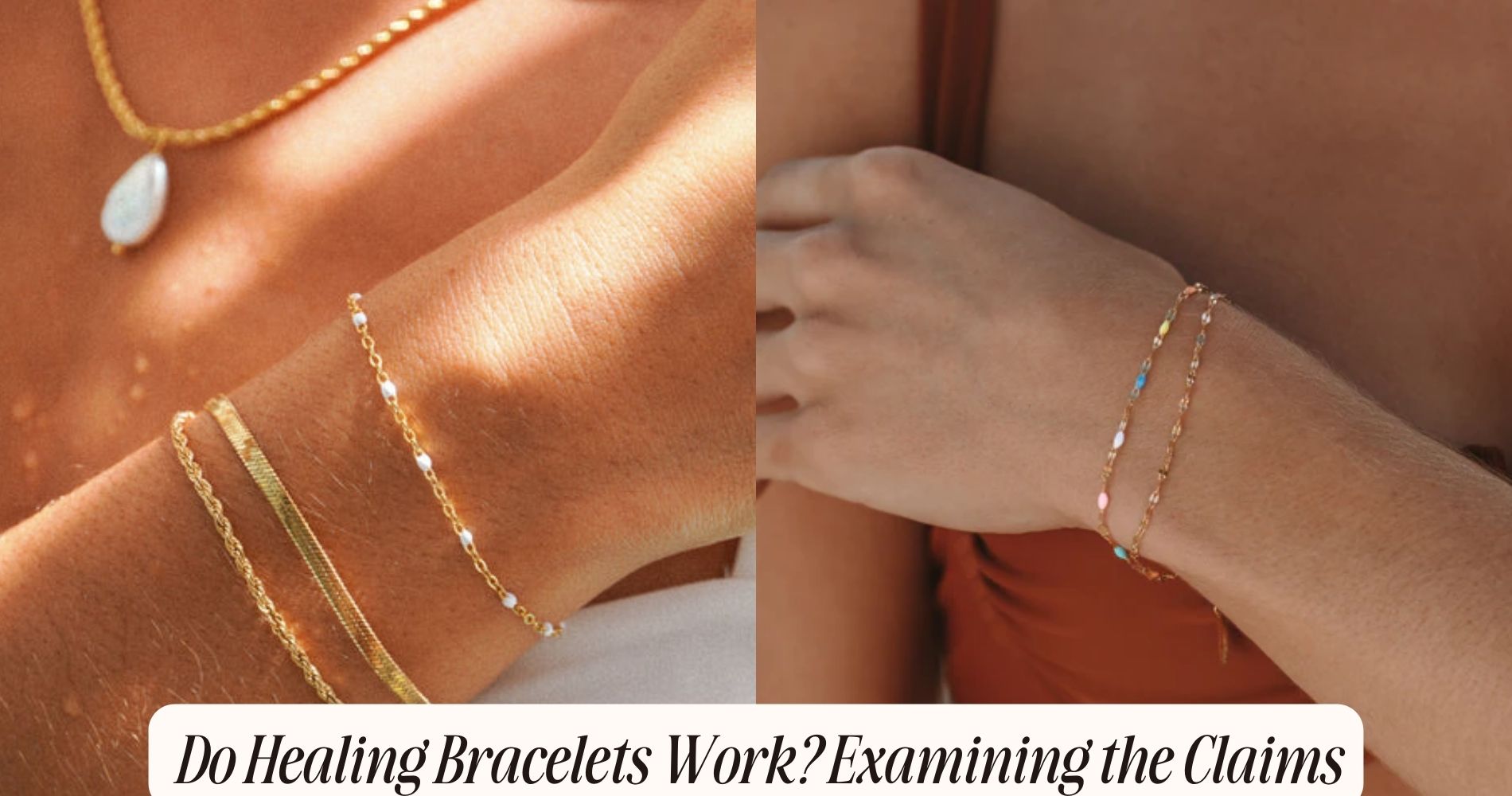
Can Stainless Steel Jewellery Go in Water?
Stainless steel jewelry can go in water without issues. Its high chromium content forms a protective oxide layer, preventing rust. Elements like nickel and molybdenum enhance durability, ensuring that water exposure won't easily tarnish or corrode it. Periodic cleaning and drying maintain its water resistance. Its robust nature withstands water challenges well, allowing you to enjoy wearing it confidently in water. For a wide range of stylish accessories that combine the resilience of stainless steel with elegant designs, explore our Waterproof Jewelry collection.
Water Resistance of Stainless Steel
When exposed to water, stainless steel demonstrates exceptional resistance to corrosion due to its inherent properties. This resistance is primarily attributed to the composition of stainless steel, which includes a high percentage of chromium. Chromium forms a protective oxide layer on the surface of the steel, preventing direct contact between the metal and the surrounding environment. This waterproof design effectively shields the steel from moisture, thereby inhibiting the formation of rust.
Rust prevention in stainless steel is further enhanced by its alloying elements, such as nickel and molybdenum. These elements contribute to the overall durability and longevity of stainless steel, making it an ideal choice for items that may come into contact with water frequently, like jewelry. The combination of these elements not only provides rust resistance but also guarantees that the steel maintains its integrity and luster over time, even in challenging environments.
Benefits of Stainless Steel Jewellery
Stainless steel jewelry offers a range of benefits, including exceptional durability and resistance to tarnishing. When it comes to rust prevention, stainless steel excels due to its composition, primarily consisting of iron, chromium, nickel, and molybdenum. The chromium content in stainless steel forms a protective oxide layer on the surface, preventing corrosion and rusting. This layer acts as a barrier against moisture and other elements that could cause degradation over time.
Durability factors play a significant role in the popularity of stainless steel jewelry. The alloy's robust nature makes it highly resistant to scratching, bending, or damage from daily wear. Unlike other materials, stainless steel maintains its shape and finish even with regular use, making it ideal for long-term jewelry pieces. Additionally, its strength ensures that intricate designs and details remain intact without losing their appeal. Overall, the durability and rust-prevention properties of stainless steel jewelry make it a reliable and low-maintenance choice for everyday wear.
Factors Affecting Water Tolerance
When pondering water tolerance in stainless steel jewelry, the material composition plays a vital role in determining its resistance to corrosion.
Protective coatings are also important as they can enhance the jewelry's ability to withstand water exposure.
Understanding the corrosion resistance levels of stainless steel jewelry is essential to evaluating its durability when in contact with water.
Material Composition Impact
Understanding the impact of material composition on the water tolerance of stainless steel jewelry is essential for evaluating its durability and resistance to corrosion.
Stainless steel's high resistance to rust is primarily due to its composition of iron, chromium, and nickel. The addition of chromium forms a protective oxide layer on the surface, preventing rust and enhancing material durability.
The presence of nickel further improves corrosion resistance, making stainless steel jewelry suitable for water exposure. This composition also contributes to the metal's strength and longevity, ensuring that your jewelry remains intact and retains its aesthetic appeal even when in contact with water.
Protective Coatings Importance
To enhance the water tolerance of stainless steel jewelry, the importance of protective coatings can't be overstated in safeguarding against corrosion and maintaining long-term durability.
Coating durability plays a critical role in resisting water-induced degradation. The application of waterproofing techniques, such as specialized sealants or nano-coatings, further enhances the protective layer's ability to repel water and prevent direct contact between the stainless steel and moisture.
These techniques help in reducing the risk of rust and corrosion, thereby extending the lifespan of the jewelry. Properly maintained protective coatings are essential for ensuring the water resistance of stainless steel jewelry, making them suitable for everyday wear, even in wet conditions.
Corrosion Resistance Levels
To assess the corrosion resistance levels of stainless steel jewelry, it's essential to understand the various factors that directly influence its water tolerance. Corrosion prevention plays a vital role in maintaining the integrity of stainless steel in water.
The alloy composition of stainless steel, particularly the presence of chromium, enhances its corrosion resistance by forming a protective oxide layer on the surface. This oxide layer acts as a barrier, preventing water and other corrosive agents from penetrating the metal.
Additionally, the waterproof properties of stainless steel contribute to its durability in water environments, making it a suitable choice for jewelry that may be exposed to moisture.
Understanding these factors is essential in ensuring the longevity and quality of stainless steel jewelry when worn in water.
Cleaning Stainless Steel Accessories
For a thorough clean of your stainless steel accessories, consider utilizing a mild detergent solution and a soft cloth for best results. To prevent rust and maintain waterproof properties, it's important to clean your stainless steel accessories regularly.
Begin by mixing a mild detergent with warm water. Dip a soft cloth into the solution and gently wipe the stainless steel surface, paying attention to any crevices where dirt and grime may accumulate. Avoid abrasive materials that could scratch the surface of your accessories.
After cleaning, rinse the accessories with clean water to remove any soapy residue. Dry them thoroughly with a soft, dry cloth to prevent water spots. For stubborn stains, a non-abrasive stainless steel cleaner can be used sparingly. Remember to always follow the grain of the stainless steel when cleaning to avoid damaging the surface.
Tips for Maintaining Water Resistance
To maintain the best water resistance of your stainless steel jewelry, make sure to follow a regular cleaning routine using a mild detergent solution and soft cloth. Water activity can compromise the integrity of your jewelry if not properly maintained.
After exposure to water, it's crucial to dry your stainless steel pieces thoroughly to prevent water spots or potential corrosion. Regularly inspect your jewelry for any signs of damage or wear, as this can impact its water resistance over time.
Additionally, consider applying a specialized stainless steel cleaner or polish to help maintain the protective layer of your jewelry. When not wearing your stainless steel pieces, store them in a dry place away from moisture to further preserve their water resistance.
Stainless Steel Vs. Other Metals
Maintaining the water resistance of stainless steel jewelry differs greatly from that of other metals due to its unique composition and properties. When comparing durability, stainless steel outshines many other metals due to its high resistance to corrosion and tarnishing. This makes it a top choice for water exposure, as it won't easily rust like iron or tarnish like silver. When it comes to rust prevention, stainless steel's chromium content forms a protective layer that acts as a barrier against moisture, unlike metals like copper that are prone to oxidation.
Moreover, when considering fashion trends and skin sensitivity, stainless steel jewelry offers a wide range of designs that cater to various styles while being hypoallergenic, making it suitable for those with sensitive skin. Other metals like nickel can cause allergic reactions in some individuals, making stainless steel a safer option for everyday wear, especially when exposed to water. Overall, stainless steel stands out among jewelry metals for its durability, rust prevention, versatility in design, and skin-friendly properties.
Risks of Water Exposure
Exposure to water can compromise the integrity of stainless steel jewelry, potentially leading to corrosion and tarnishing over time. Rust prevention is essential in maintaining the quality of your stainless steel pieces. Stainless steel is corrosion-resistant, but when exposed to water, especially in the form of saltwater or acidic solutions, it can still corrode over time.
To mitigate this risk, consider using waterproofing techniques. Applying a thin layer of clear nail polish or a specialized jewelry sealant to the surface of your stainless steel jewelry can act as a protective barrier against water exposure. Additionally, storing your jewelry in a dry place when not in use can help prevent unnecessary water contact.
Regularly inspect your stainless steel pieces for any signs of tarnishing or corrosion, and promptly address any issues to maintain their longevity. By taking these preventive measures and implementing waterproofing techniques, you can help safeguard your stainless steel jewelry from the effects of water exposure.
Testing Stainless Steel in Water
Testing stainless steel in water involves subjecting the material to various immersion durations and water conditions to assess its corrosion resistance and durability. Rust prevention is a key focus during these tests, as stainless steel's ability to resist rust is essential for its longevity.
Durability testing typically includes exposing the stainless steel to different water types, such as saltwater or chlorinated water, to simulate real-world conditions. The immersion durations can range from hours to days, depending on the specific testing parameters.
During these tests, technicians carefully monitor the stainless steel for any signs of corrosion, discoloration, or degradation. By analyzing the material's response to water exposure, researchers can determine the effectiveness of the stainless steel's rust prevention properties.
Additionally, durability testing helps assess how well the stainless steel maintains its structural integrity when submerged in water for extended periods.
Conclusion and Recommendations
What're the key findings and practical recommendations derived from the extensive testing of stainless steel jewelry in various water conditions?
The durability tests conducted on stainless steel jewelry exposed to different water environments revealed that the material possesses excellent resistance to corrosion and tarnishing. Stainless steel's inherent properties make it suitable for prolonged contact with water, whether freshwater or saltwater, without significant degradation.
However, to guarantee the longevity of your stainless steel jewelry, it's recommended to rinse it with fresh water and dry it thoroughly after exposure to water. This simple practice can help prevent any potential buildup of minerals or chemicals that may affect the appearance of the jewelry over time.
Additionally, periodic inspections and maintenance can aid in early detection of any signs of rust formation, allowing for timely intervention to maintain the jewelry's pristine condition. By following these suggestions for rust prevention and regular upkeep, you can enjoy your stainless steel jewelry in water environments with confidence and style.
Frequently Asked Questions
Does Saltwater Affect Stainless Steel Jewellery Differently Than Freshwater?
Saltwater affects stainless steel jewelry differently than freshwater. It can lead to faster corrosion due to its higher salt content. To maintain durability, rinse jewelry with fresh water after exposure. Clean regularly with mild soap to prevent damage.
Can Stainless Steel Jewellery Tarnish or Rust in Chlorinated Water?
In chlorinated water, stainless steel jewellery is generally resistant to tarnishing or rusting. However, prolonged exposure can lead to discoloration. Quick rinsing and proper cleaning methods help maintain its appearance. Allergies and reactions are rare due to stainless steel's hypoallergenic properties.
How Long Can Stainless Steel Jewellery Stay Submerged in Water?
When submerged, stainless steel jewelry's corrosion resistance and durability make it suitable for prolonged water exposure. Regular maintenance is crucial to preserve its waterproof properties. Make sure to dry and clean it after use.
Is It Safe to Wear Stainless Steel Jewellery in Hot Tubs or Saunas?
Wearing stainless steel jewelry in hot tubs or saunas may cause skin reactions due to prolonged exposure to heat and chemicals. To prevent this, clean the jewelry regularly using mild soap and water.
Will Water Exposure Affect the Color or Shine of Stainless Steel Accessories?
Exposure to water can impact stainless steel accessories' color or shine over time. Regular cleaning methods and occasional polishing can help maintain their appearance. Water should not cause skin allergies or adverse reactions.
Conclusion
To sum up, stainless steel jewellery can generally withstand exposure to water without significant damage. Its corrosion resistance and durability make it a suitable choice for water-related activities. However, proper care and maintenance are still vital to guarantee long-lasting quality.
Regular cleaning, avoiding harsh chemicals, and storing properly can help maintain the water resistance of stainless steel accessories. Remember to test the jewellery periodically to verify its integrity in water environments.























Leave a comment
This site is protected by hCaptcha and the hCaptcha Privacy Policy and Terms of Service apply.